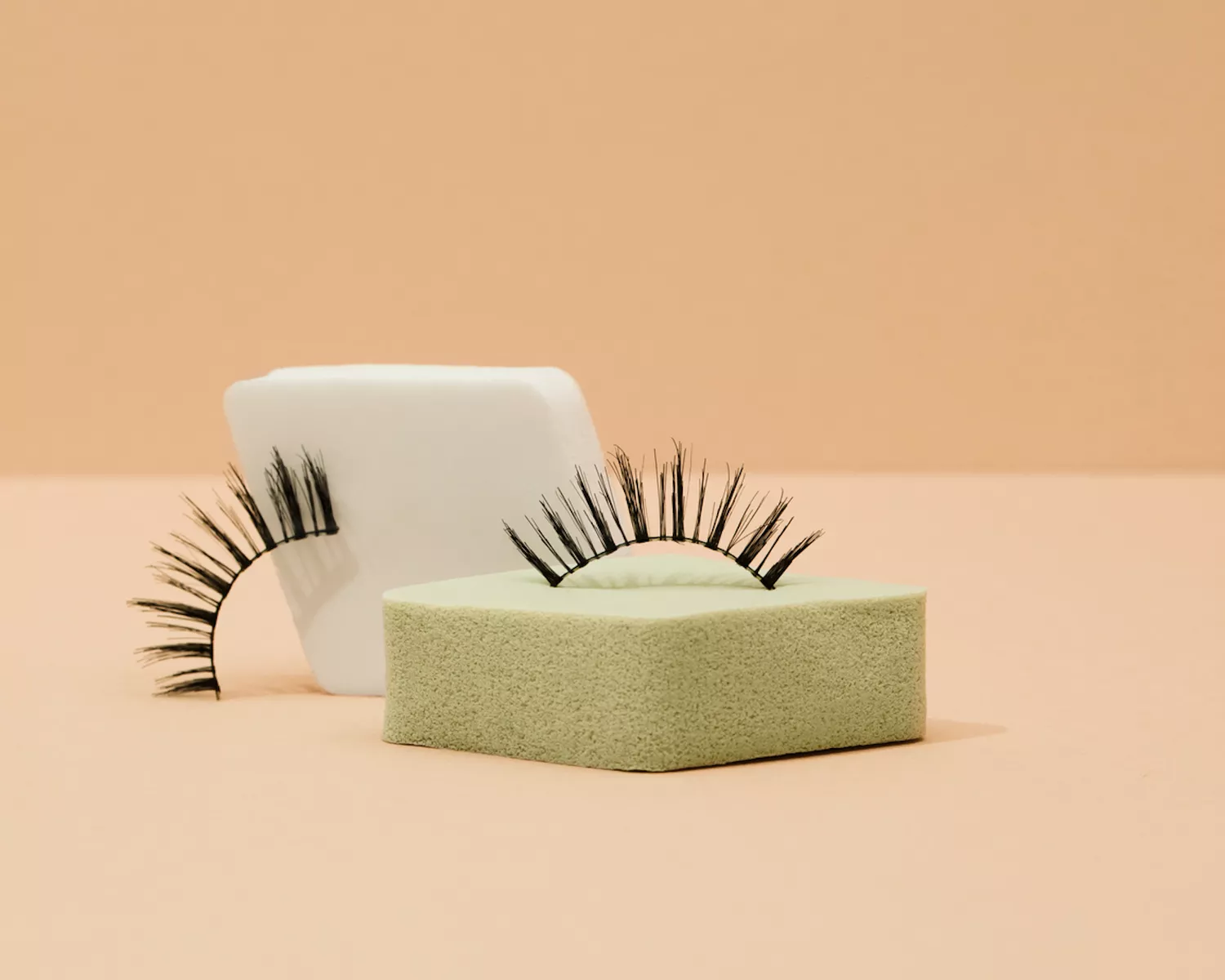
Lumina/Stocksy
Chances are youve worn false eyelashes before or have tried extensions, yet its likely that you may not know what theyre actually made of. Since wearing a pair of false lashes can amplify your makeup look, its worth finding out which ones suit you best, starting with learning about the materials. Whether youre looking for a pair to wear daily or want to enhance your eyes for a special night out, weve teamed up with a lash stylist to break down each type of lash and the differences in the formula so you can figure out whats best for you.Keep scrolling to read our comprehensive guide on what false lashes are made of.
Meet the Expert
Lash Types and What Theyre Made Of
of 04
Mink Eyelashes
The first thing to note about mink eyelashes is the delicate nature of the lash. "Real mink lashes are relatively thin and tend not to hold a curl, measuring .05-.07 mm, much lighter than natural eyelashes," Richardson explains. She notes that while people will choose real mink from time to time, faux mink formulas are more popular, and clients usually mistake them for natural mink lashes as its harder to tell them apart. If you want your lashes to look curled, the con of choosing mink formulas is you might not get the result youre hoping for.
If youre looking for a softer-looking lash, Richardson advises that faux is completely fine to wear. "Faux mink lashes are suited best for clients looking for a softer look," she says. "Its important to note that faux mink eyelashes are not as dark in color."
of 04
Faux Human Hair Eyelashes
Are faux human hair lashes a thing? Richardson explains that faux human hair is another way to describe synthetic lashes such as mink and silk: "Suppliers will create new names for products, but it has nothing to do with the material itself." If you see something advertised as faux human hair, its best to take it one step further and get to the bottom of what the lashes are made of to make an informed decision.
If gluing a pair of lashes on for the night is what youre after, taking note of the shape and fullness is key, no matter what material they are. This way, you can figure out how naturally dramatic youll lean. The approach to putting lash extensions on is a bit different, as theyll last much longer than those applied with glue.
of 04
Synthetic Lashes
Synthetic lashes are popular among clients and lash technicians alike. "We mainly use synthetic lashes in the lash industry," Richardson shares. "Synthetic lashes come in many lengths, curvatures, and widths. Measuring anywhere from .05-.25 mm, we commonly use .20 to give the look of mascara." This explains why extensions have become increasingly popular and in high-demand: You can wake up and instantly look like youre wearing mascara, versus needing to apply it. Who doesnt want that?
The pros? Synthetic lashes come in more varieties than their counterparts. You have more widths, lengths, and styles to choose from, so everyone can find something they like. If you want something a bit more dramatic and with contrast, synthetics might not be the right fit.
of 04
Silk Lashes
Silk lashes could be your solution if you want lashes that make more of a statement. "Silk lashes are darker in color and will create more of a contrast with your skin," Richardson explains. Its important to note that you will need refills on your extensions every two to three weeks, so if you want your lashes to look less noticeable as they shed, silk extensions might not be best suited for you since the contrast can become more prominent over time with missing lashes.
"Humans tend to lose one to five natural lashes daily," Richardson says. "With extensions, its possible you could last a full five weeks before needing a refill, though some need refills every two to three weeks. Within two to three weeks, there should still be 50-70% of the extensions still attached."
Caring for False Lashes and Lash Extensions
If youre removing false lashes at night after applying them with lash glue, its important to gently remove them before washing your face to avoid any irritation. You can reuse a pair of lashes up to two more times following their initial application, but removing the glue and ensuring theyre clean before applying again is imperative.
Taking care of professionally applied lash extensions is different and requires more planning. "Failure to follow your post-lash care could result in breakage or excessive shedding," Richardson explains. "Its imperative to avoid any steam and not to wet your lashes for the next 48 hours after application."
Richardson has quite a comprehensive list of dos and donts when it comes to taking care of your lash extensions. "Youre going to want to avoid rubbing your eyes, applying oil-based products and heavy creams around the eye area, playing with or picking at your lashes, over-brushing, waterproof mascaras, and shower heads with excessive force, along with any kind of eyelash curler," she says, as these can all compromise your extensions. Her tips for what you should do to keep your extensions in good condition? "Be gentle with your lashes, apply a protective coating to them 48 hours after your treatment, and opt for using silk or satin pillowcases, as cotton ones can [lead to] drying and snagging."
Can you use lash growth serums even while you have extensions in? You sure can, as long as youre careful about it. "Wait 48 hours to apply any lash serum to eyes after extensions, and once the 48 hours are up, you can also wet your lashes, yet youll need to dry them immediately after," Richardson explains.